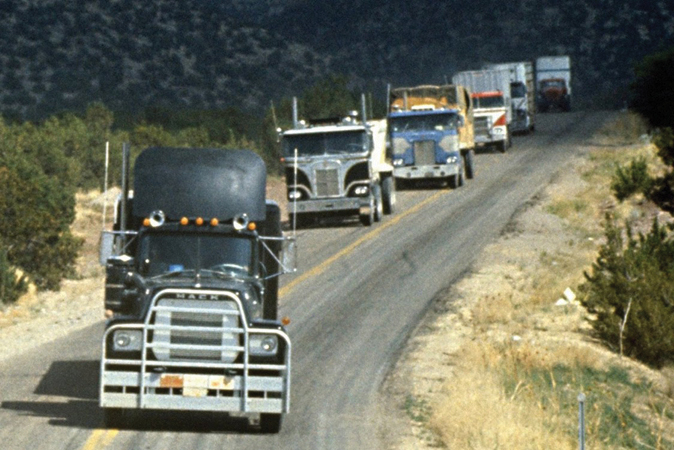|
By Dean Croke, Principal Analyst,
DAT Freight & Analytics
“Top Gun: Maverick” may not have received the Academy Award for best picture this year, but the U.S. Navy still has high hopes that it’s a winner with men and women of enlistment age. After all, recruiters saw a 500% increase in applications following the first “Top Gun” movie in 1986.
The trucking industry could use that kind of blockbuster.
According to the U.S. Census Bureau, nearly 3.5 million people are employed as truck drivers in the United States, about 1.9 million of which operate a tractor-trailer or heavy truck moving freight over the road.
Truck driving is one of the most common jobs out there. And why not?
You don’t need an advanced degree. You can take a driver training course and be gainfully employed in a matter of weeks (provided you can pass a drug test and criminal background check).
Wages and sign-on bonuses have snowballed over the last three years, especially for newer drivers. Trucking is immune to globalization and automation—you can’t send the work overseas or outsource it to a machine (not yet). Many drivers come into the industry from other truck-using vocations, like farming, construction, and the military. They’re not intimidated by big machines or industrial settings.
Yet there’s constant chatter about a truck driver shortage.
In it for the long haul
The fact is, filling open driving jobs isn’t the industry’s biggest problem. It’s doing what’s necessary to persuade experienced drivers to stick around and make truck driving a career.
Most new truck drivers don’t make it past a year. Turnover at large truckload carriers typically hovers at 85% or more, meaning that for every 100 people a company hires, 85 walk out the door—often within the first 90 days.
Many drivers sign on and quickly realize the job is tougher than they bargained for. The extended periods away, insufficient pay for the time involved, poor working conditions, lonely miles, sleepless nights, poor treatment by shippers and receivers, and never-ending harassment from car drivers and enforcement officials quickly take their toll mentally and physically.
Some drivers never intend to stick around. They see trucking as a way to make money when they’re between jobs. For them, a CDL is a ticket to seasonal or temporary work.
Others just can’t see a long-term career path from the driver’s seat. Drivers with 10 years of experience have likely reached the top of their company’s per-mile pay scale. The only way to increase their earnings as an employee is to run more miles or leave the truck to take on management or training roles.
|

Glory days
It’s a far cry from the “knights of the road” image in the 1970s when American pop culture embraced the trucker lifestyle. Truck drivers’ larger-than-life personalities and big rigs made for some of the most iconic movies and TV shows ever.
During the 1970s and 1980s, Hollywood enlisted some of the biggest stars to play trucker roles: Clint Eastwood, Sylvester Stallone, Kris Kristofferson, Chuck Norris, Burt Reynolds, Sally Fields, Jerry Reed, Claude Akins, Patrick Swayze, Kurt Russell, Forrest Tucker, and Mel Gibson.
Yes, Mel Gibson’s Mad Max counts as a truck driver. Max drove a Mack R-600 Coolpower in the first movie and a Czech Republic-made Tatra T815 wrecker and steel cab Mack R-600 (known affectionately as “Flintstones” by Australian truckers) in “Mad Max: Fury Road.”
Right when truckers were being glorified in movies and on TV, the Federal Communications Commission lifted the operating-license requirement for CB radios, meaning any average citizen could buy a CB and listen to truck drivers’ conversations. Trucker lingo became mainstream as a result.
The image and language attracted a generation of truckers now in retirement or getting close to it. Bringing new drivers into the industry is hard and getting harder.
Today’s trucking industry can be corporate and, at times, dehumanizing. Cameras and onboard computers monitor a driver’s every move, and any deviation from the norm will push an alert to management. Some large fleets have stripped CB radios out of their cabs because they don’t want to “distract” rookie truck drivers instead of helping them communicate with other professionals about their surroundings, especially during hazardous winter whiteout conditions, most likely saving their lives.
Of course, attracting and retaining truck drivers takes more than a movie, but it’d be a great place to start.
How about Tom Cruise starring in “You Want it Delivered When?” where he plays a trucker trapped at a receiver warehouse for 36 hours trying to unload his million-dollar time-sensitive cargo resorting to never-before-seen stunts to get unloaded?
I’d go see that. Pass the popcorn.
Dean Croke is the principal analyst at DAT Freight & Analytics, which operates the transportation industry’s largest marketplace for spot truckload freight and the DAT iQ freight-data analytics service.
|

